For the traveller who seeks freedom and adventure, self-driving holiday plans are about as good as it gets. Getting from place to place at your own pace is liberating, and makes it easier to explore places that aren’t easily accessible via public transport. Even in Japan (a destination with a lauded train and rail transport system) it’s hard to beat the sensation of tossing your bags in the boot of a rental car and touring the city at your own pace and time. No need for furrowed brows and a crumpled train timetable!
Also read: Tokyo Shopping: 10 of the City’s Lesser-Known Shopping Districts
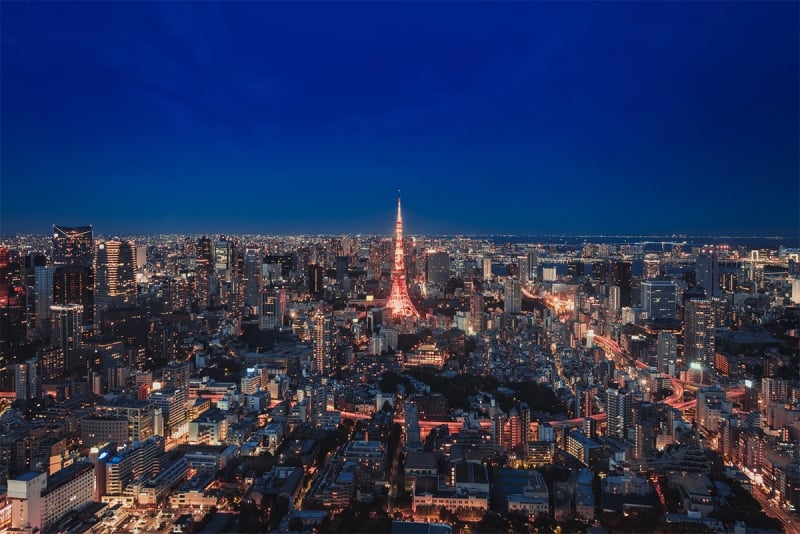
Image credit: Freeman Zhou
In Tokyo, the driving experience ramps up to a whole other level. Fans of Wangan Midnight, rejoice! You’ll get to see all the hallmarks of the highways you saw on the pages of the manga, with the winding roads and layers upon layers of flyovers and tunnels all coming together under the tungsten glow of the street lamps. While you can’t follow in the footsteps of the protagonist and zip through traffic in their souped-up sports car, the Shutoko (首都高速道路; translated as ‘Metropolitan Expressway’) is a great way to take in the city. So, read on for our handy guide on where and what to see along this convenient loop around metropolitan Tokyo!
1. Odaiba
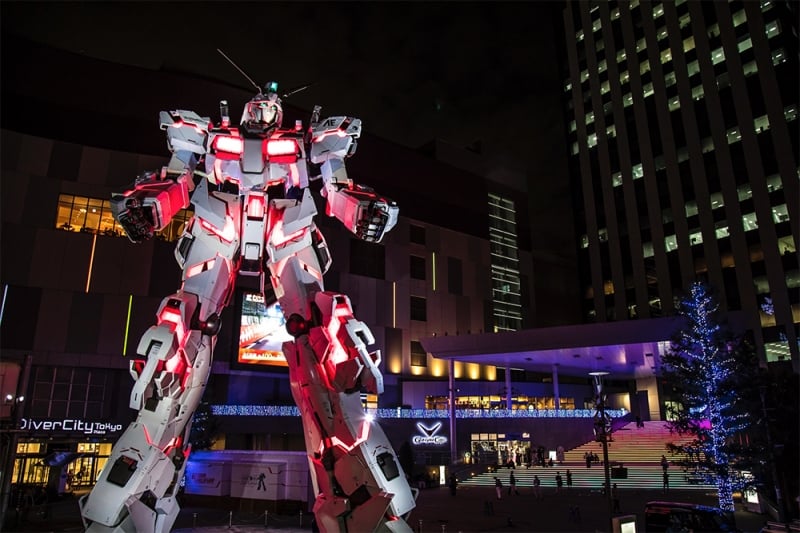
Image credit: ©Sotsu
A good place to start your Tokyo sightseeing would definitely be Odaiba, a manmade island packed full of shopping and leisure opportunities. You’ll even find the famous larger-than-life Gundam statue here! It comes alive with a dazzling light display at night, and leaves an impression on you right from first glance with its awe-inspiring scale.
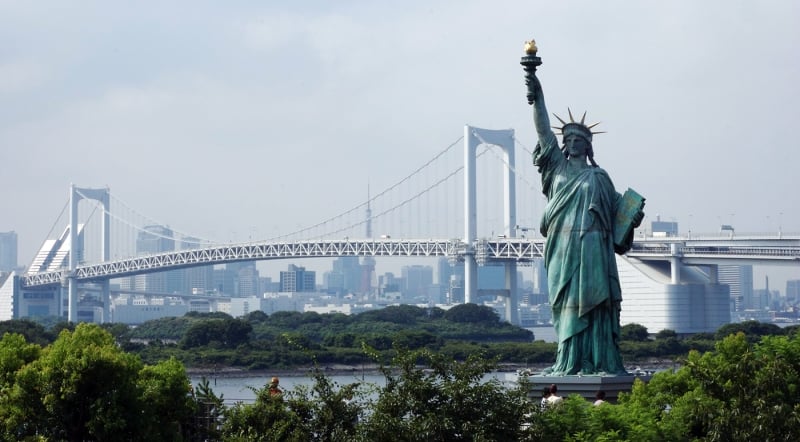
Image credit: Jacob Ehnmark
Other photogenic landmarks include the geometric Fuji TV Building, and Odaiba’s replica of the Statue of Liberty overlooking the Tokyo Harbour. The shopping malls here cater to the thrill-seekers too, with everything from arcades to water parks right in their cavernous interiors.
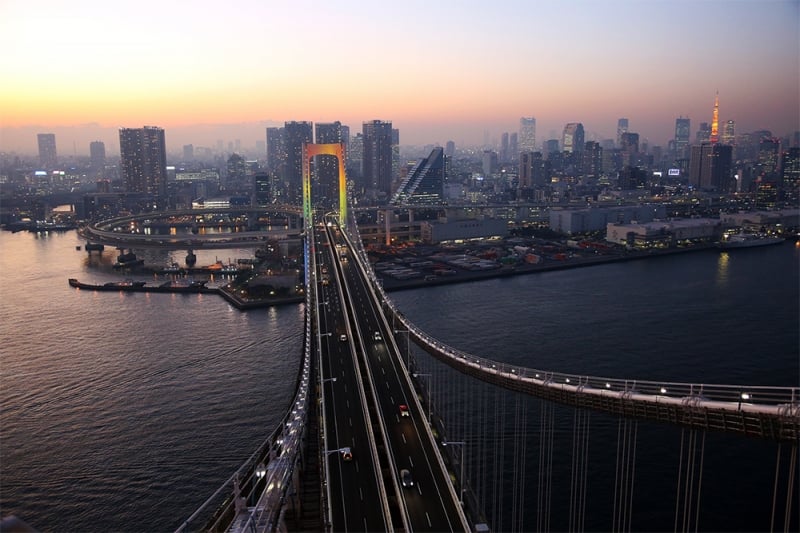
Image credit: Metropolitan Expressway Company Limited
A destination for the romantics in us, Odaiba Marine Park sits on Tokyo Bay, and offers a stunning view of the Rainbow Bridge at dusk. The Rainbow Bridge is illuminated with multicolored lights at night, making for quite the experience when you drive along it! Be sure to catch a photo opportunity while you are perched on the 5-kilometre-long boardwalk as well. What a way to end the night!
Odaiba
Address: Minato City, Tokyo 105-0000
Access: Take the Bay Shore Route, exit via Rinkai-fukutoshin (B22), Ariake (B23) or 11 Daiba Line, exit via Daiba (1101).
Recommended parking area: Odaiba Marine Park, Central Parking or North Gate Parking
2. Imperial Palace
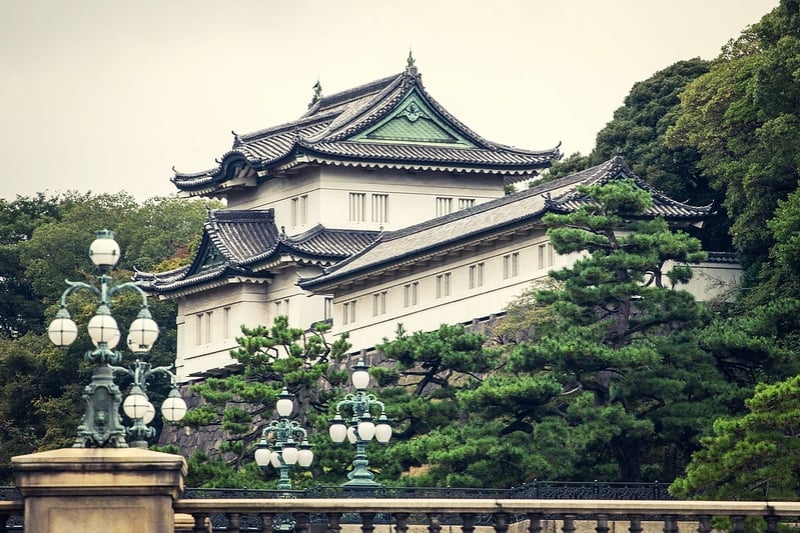
Image credit: Thilo Hilberer
Next, drop by the Imperial Palace, right smack in the centre of the Inner C1 Route of the Shutoko. Home to the Japanese Royal Family, the Imperial Palace is a historical compound much like Windsor Castle, and is steeped in an atmosphere of elegance and royalty. The carefully manicured vegetation and ponds are quite the sight to catch, although you won’t have much access to the main building where the royal family reside.
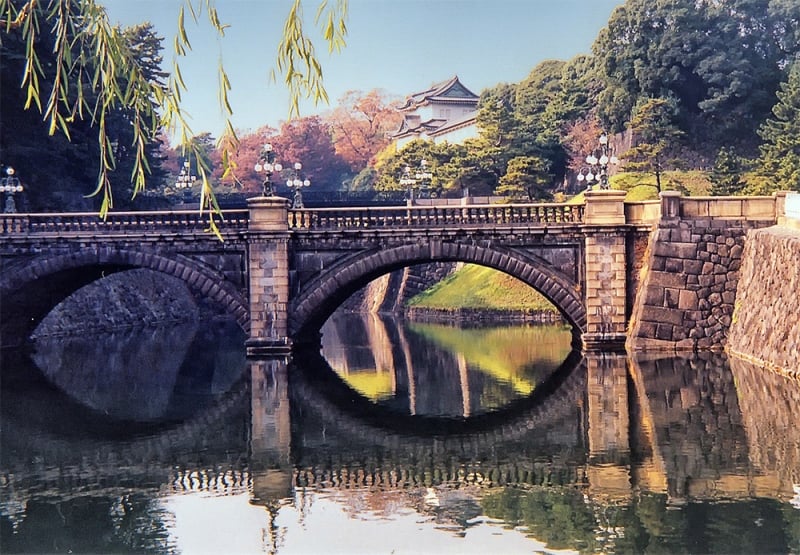
Image credit: Ray in Manila
The main grounds are mostly off-limits to members of the public, except for two special dates every year — 2nd January to welcome the new year and 23rd February for the Emperor’s Birthday. On any other day, you are still free to join a twice-daily guided tour that will take you around the gardens of the palace. Keep in mind to reserve a spot beforehand!
Imperial Palace
Address: 1-1 Chiyoda, Chiyoda City, Tokyo 100-8111
Access: Take the Yaesu Route, exit via Marunouchi (44).
Recommended parking area: Marunouchi Central Parking Lo
3. Tokyo Tower
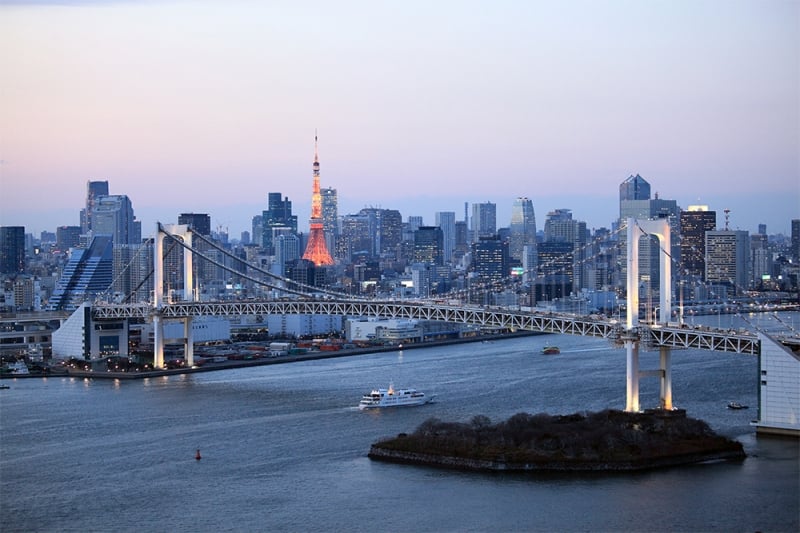
Image credit: Metropolitan Expressway Company Limited
One of the two towers gracing the skyline of the metropolis, the Tokyo Tower is a must-see for first-time visitors. Inspired by the iconic Eiffel Tower, the popular tourist viewpoint is the second tallest freestanding structure in the whole of Japan, standing at 332 metres tall, and doubles up as a communications tower for the city.
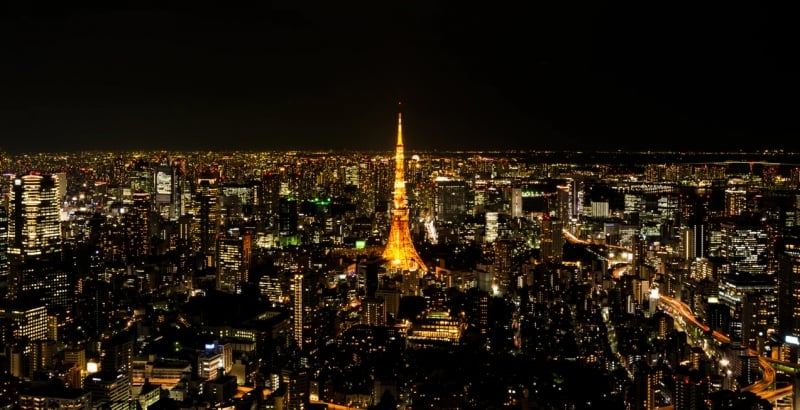
Image credit: Sen Lee
There are two observation decks on the tower, both of which are pay-to-access. The one at 150 metres up is the main observatory deck, which has interesting information panels and a great bird’s eye view of the city. The other deck at 250 metres has a great 360° lookout, and at this height, you’re standing pretty much above everyone else in Tokyo! There’s even a section with glass flooring for the adventurous, letting you look straight down through the tower. Not for those with a fear of heights!
Tokyo Tower
Address: 4 Chome-2-8 Shibakoen, Minato City, Tokyo 105-0011
Access: Take the Inner Circular Route, exit via Shibakoen (19) (20).
Recommended parking area: Tokyo Tower Parking Centre
4. Ginza
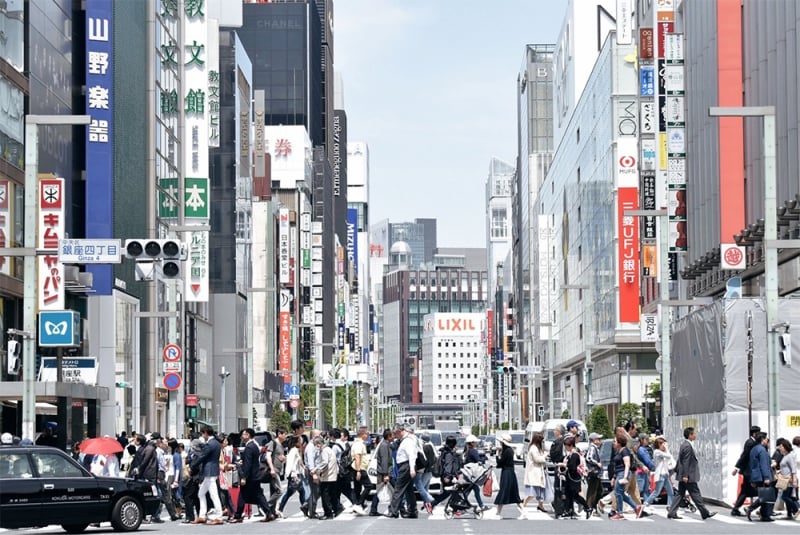
Image credit: Yoshimitsu Kurooka
Ginza is the high-end shopping district of Tokyo, with boutiques and department stores everywhere you look. One place to check out: the largest Uniqlo in the world! There are many levels for you to find exactly the style you might be looking for.
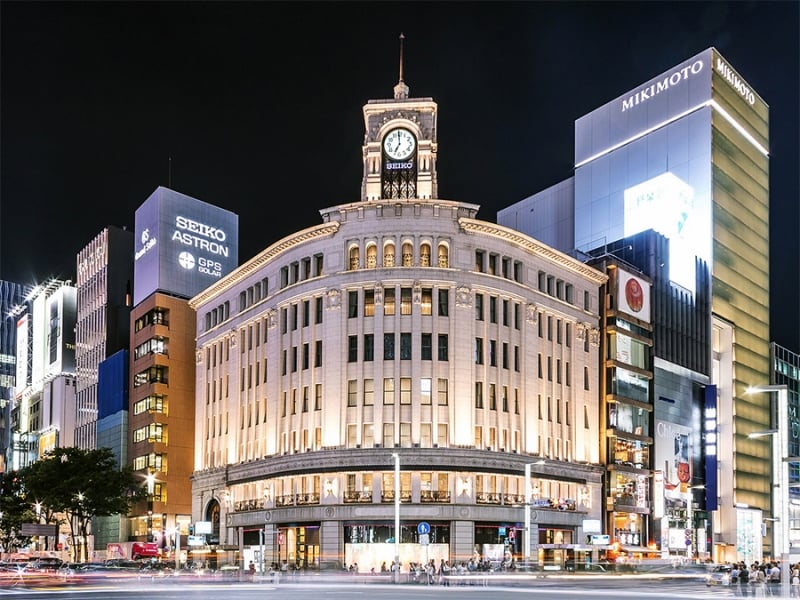
Image credit: Kakidai
Once you are done with that, hit up Kimuraya Pan for a taste of anpan (a Japanese pastry with red bean paste) straight from the original creators. The popular treat was invented in 1874 by the bread store, but there are also many other flavours for you to fill your stomach with.
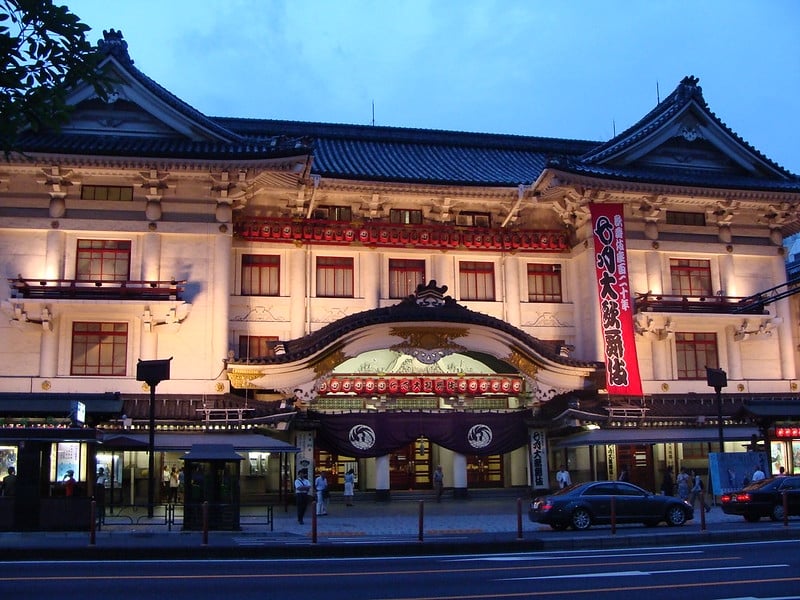
Image credit: knhiraoka
Ginza is also home to the famous Kabukiza Theatre, the foremost theatre for traditional Japanese stage drama. You can enjoy tea in the tearooms before the performances, and for those who might not know Japanese, translation devices are available for rent so you get to enjoy the full experience. Do plan ahead for this if you are keen on watching a performance, though, as the whole affair usually lasts for 3 to 4 hours.
Ginza
Address: Chuo City, Tokyo 104-0061, Japa
Access: Take the Inner Circular Route, exit via Ginza (15) (16).
Recommended parking area: TIMES Marronnier Gate 3
5. New National Stadium
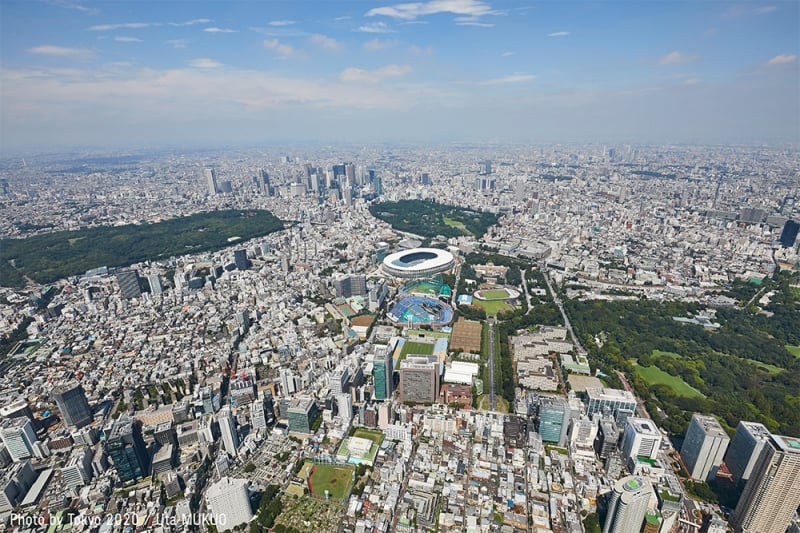
Image credit: Tokyo 2020 Twitter page
The New National Stadium is the centrepiece of the city’s preparations for the 2020 Tokyo Olympics, and will be the main venue of the event. Recently completed in November 2019, the stadium towers five storeys above ground, and has a capacity of 60,000. The seats are coloured in five different earth tones to create a sort of mosaic, representing sunbeams as they filter through the forest canopy.
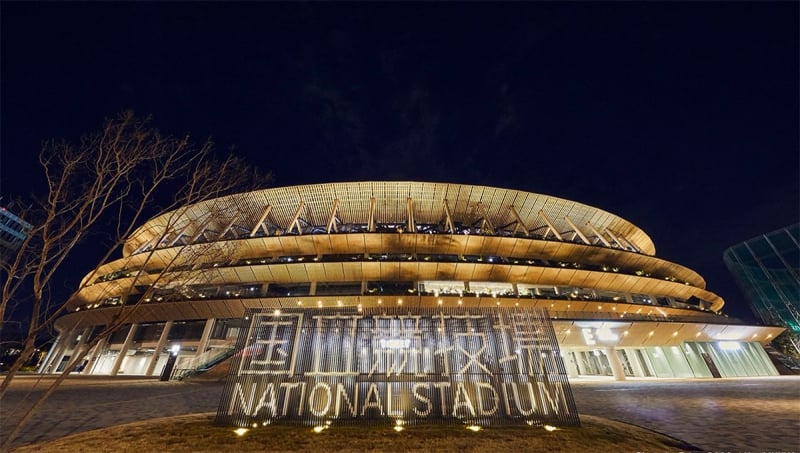
Image credit: International Olympic Committee
Wood and greenery come together in harmony for most of the stadium’s exterior design, creating a sort of interplay between urban and nature. The 850 metre-long concourse on the fifth storey is open to visitors, and is a great viewing spot for the cherry blossoms blooming in spring and the vibrant colours of the surrounding trees in fall. You can also get a pretty good view of the Shinjuku skyline from here, as well as the ever iconic Mount Fuji in the background.
New National Stadium
Address: 10-2, Kasumigaoka-machi, Shinjuku, Tokyo 160-0013
Access: Take the 4 Shinjuku Line, exit via Gaien (401) (402).
Recommended parking area: Mitsuino Repark Parking Lot or Meiji-jingu Gaien Ice Skating Rink Parking Lot
6. Tsukiji Outer Market
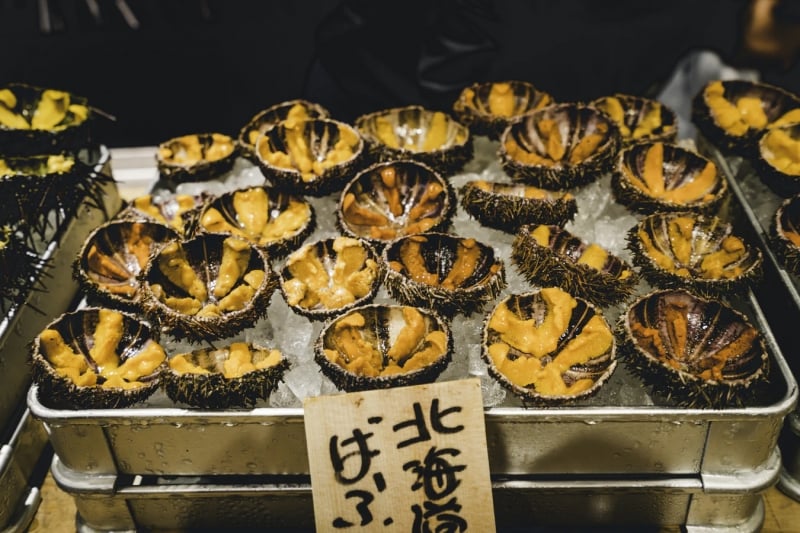
Image credit: Tuan Nguyen
Tsukiji Market was arguably one of the most well-known fish markets in the world — and for good reason. Since having come under the international spotlight from the news of the relocation of its famous tuna auction and wholesale market due to the Tokyo Olympics, the Tsukiji Outer Market is still alive and kicking. The main draw of Tsukiji is the myriad of fresh local fish right from the harbour, and you can get a chance to sample them right there and then from the vendors.
There are over 300 shops and restaurants in the Outer Market, and sushi joints are the top popular attraction among them, with the queue for the two most lively shops, Daiwa Sushi and Sushi Dai, taking as long as two hours before you can squeeze your way to a seat!
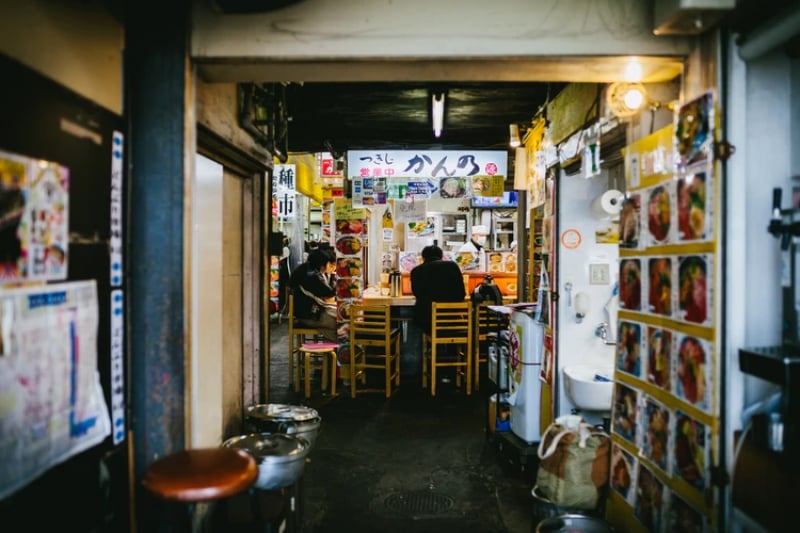
Image credit: Karsten Gohm
Tsukiji Outer Market was initially developed as an extension of the old Tsukiji market, one of the world’s biggest hubs for sashimi-grade bluefin tuna. The Inner Market, where the tuna auctions took place, were predominantly for wholesale transactions, and were inaccessible to the public. The wholesalers then sold the tuna on to the vendors in the Outer Market — this practice remains even with the relocation, the restaurant and shop owners simply have to travel a bit over two kilometres each way to buy the same fresh tuna!
Tsukiji Outer Market
Address: 4 Chome-10-16 Tsukiji, Chuo City, Tokyo 104-004
Access: Take the Inner Circular Route, exit via Ginza (15) (16).
Recommended parking area: Tsukiji-Gawa-Daiichi Parking Lot
7. Meiji Shrine
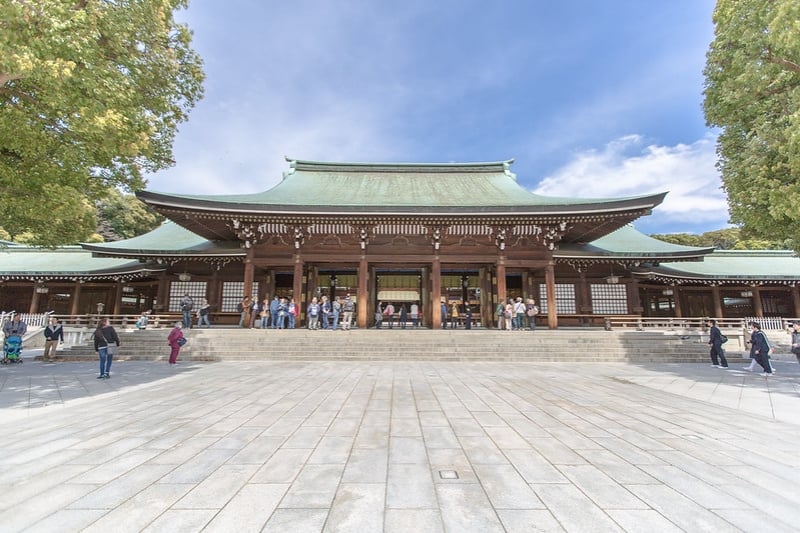
Image credit: IQremix
The Meiji Jingu, or Meiji Shrine, is an ornate Shinto shrine dedicated to Emperor Meiji and Empress Shoken. The shrine is far removed from the hustle and bustle of the city, surrounded by thick foliage and tall trees, almost like an oasis in the middle of such concentrated urbanisation.
The forest is no slice of preserved nature, though. It started as a crop of 100,000 saplings donated from well-wishers all across Japan, a sign of the reverence that was accorded to the late Emperor. The simple, traditional architecture of the shrine harkens back to the 1920s, although this incarnation is a recreation of the original, destroyed in firebombings in World War II.
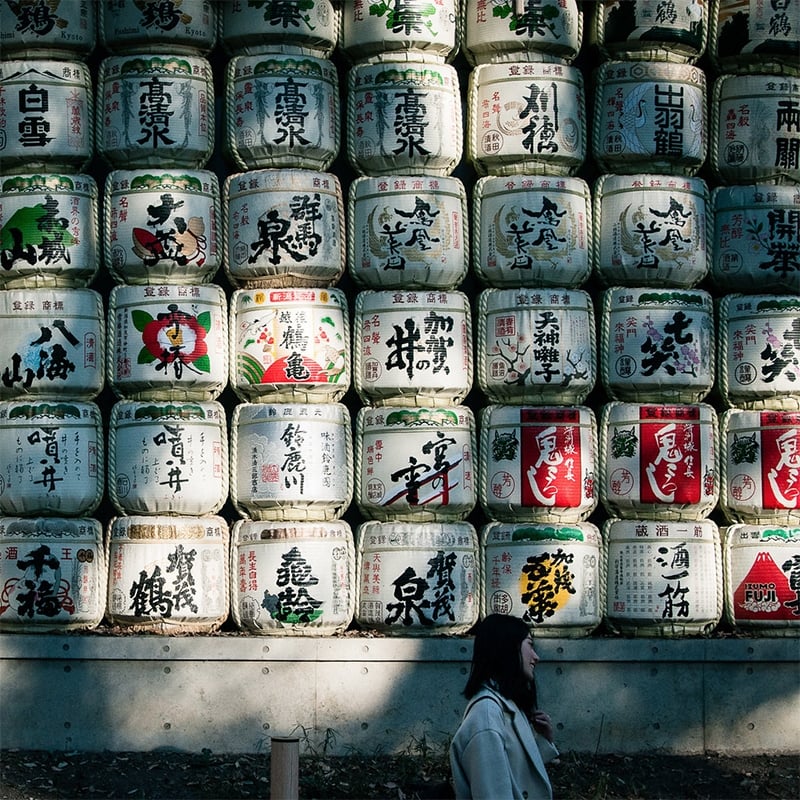
Image credit: kota
A good photo op is the long, colourful wall of stacked sake barrels. No, they’re not for your consumption. Rather, they’re offered as a token of respect to the enshrined spirits of the Emperor and his Empress.
Meiji Shrine
Address: 1-1 Yoyogikamizonocho, Shibuya City, Tokyo 151-8557
Access: Take the 4 Shinjuku Line, exit via Gaien (401) (402).
Recommended parking area: Harajuku Quest Parking Lot
8. Akihabara
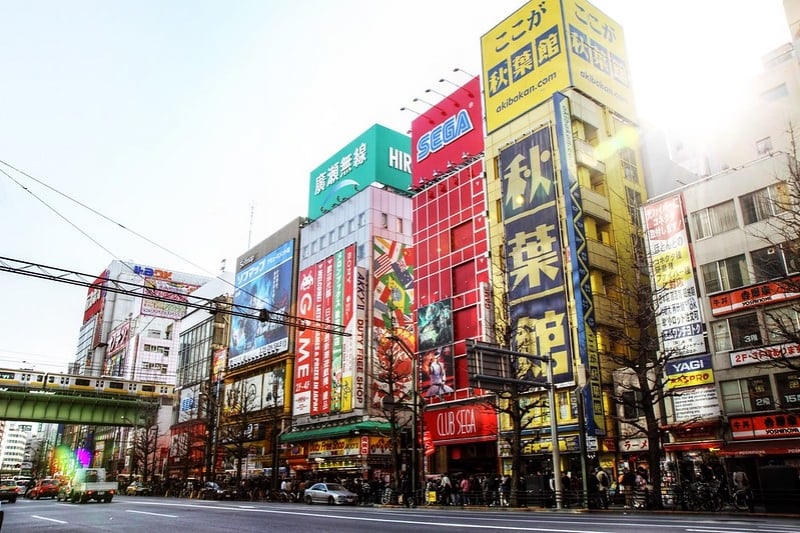
Image credit: Chris Yiu
Ah, Akihabara — the Electric Town, home of the video game, anime, and manga enthusiast. Yodobashi Camera, a major landmark in the district, is a haven for anything related to consumer electronics, such as cameras, laptops, and even household appliances like washing machines. You name it, they have it!
Hobby shops are plentiful in the area as well, chock full of rare manga and anime merchandise. For the arcade game lover, there are whole buildings dedicated to arcade games run by the juggernaut of the genre itself, SEGA. Akihabara Gachapon Hall is also a treat for the collector, with row upon row of the ubiquitous capsule machine and their randomised offerings ready for you to take home in the form of a souvenir or two. And if all those weren’t enough, the 8-storey-tall Don Quijote megastore is just the place to splurge on discount items and the most ridiculous of costumes. It’s truly an otaku’s paradise!
Akihabara
Address: 1-1 Kanda Hanaokacho, Chiyoda City, Tokyo 101-0028
Access: Take the 1 Ueno Line, exit via Honcho (181) (182).
Recommended parking area: Akihabara UDX Parking Lot
9. Shinjuku Gyoen National Garden
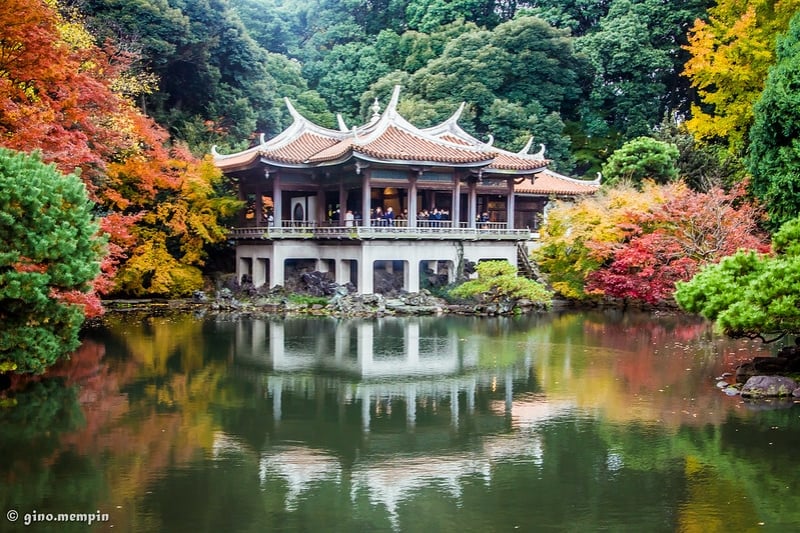
Image credit: Gino Mempin
The red maple leaves in autumn are an iconic sight of Japan, and there might be no better place in the country to see it than the Shinjuku Gyoen Garden. The maple trees are mostly concentrated around the Japanese Garden section of the park, and you can get all your Insta-worthy shots of the orange-and-red foliage in the sprawling park. If you are lucky, you might get a chance to see the ginkgo trees in all their golden-yellow glory too!
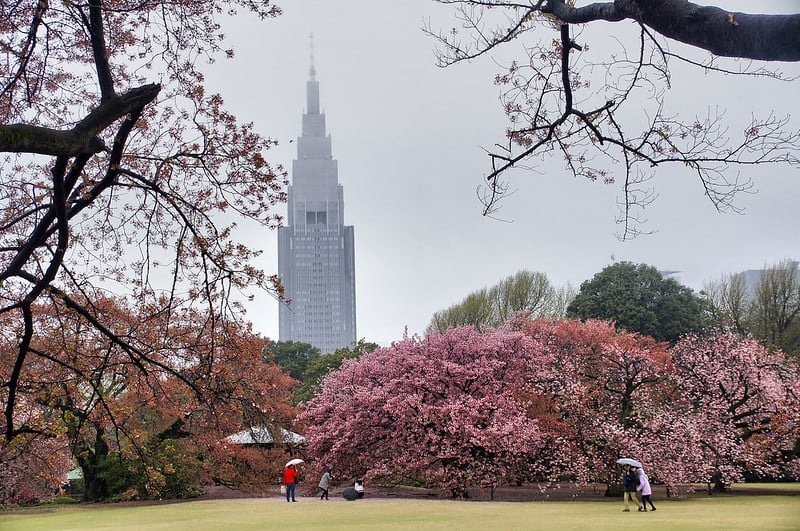
Image credit: Tatters
The garden is the largest in all of Tokyo City, and it offers everything from red fall views to sights of the stunning pink blooms in sakura season. Traditional pagodas beside calm ponds are another highlight of the garden, exuding an air of peace, especially as ball games and music are not permitted on its premises.
Shinjuku Gyoen National Garden
Address: 11 Naitomachi, Shinjuku City, Tokyo 160-0014
Access: Take the 4 Shinjuku Line, exit via Gaien (401) (402).
Recommended parking area: Shinjuku Gyoen National Garden Parking Lot
10. Tokyo Skytree
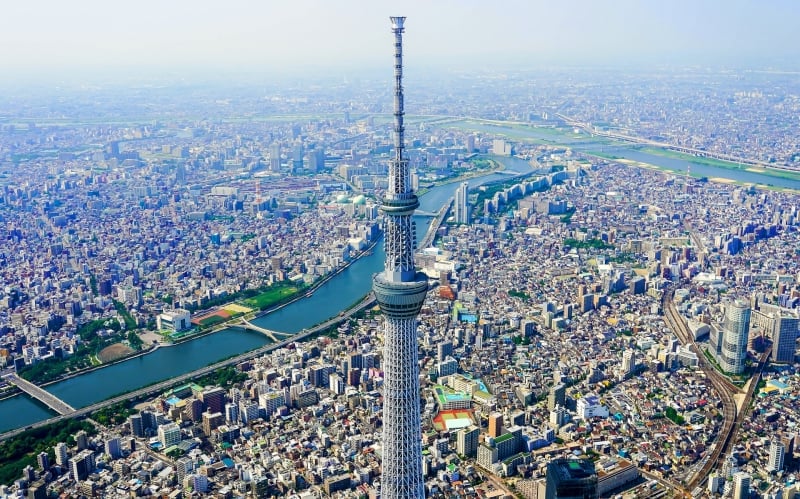
Image credit: pixabay
To round up your trip, visit the other tower of Tokyo — quite unlike the Tokyo Tower, the Tokyo Skytree has a decidedly modern, futuristic vibe to its architecture. Similarly, there are two observation platforms, at 350 metres and 450 metres. Both decks allow for stunning views of the city at dawn and dusk, and we recommend going at night to catch the streets light up in all their neon and tungsten glory to cap off your night!

Image credit: Josh Soto
A cafe can also be found on the 350-metre platform, giving you the unique opportunity to sip a cuppa while watching life go on far down below. The fun doesn’t stop when you get down from the dizzying heights, too. The base of the Skytree has both a shopping mall and a water fountain display, so you can grab some souvenirs to remember the visit with.
Tokyo Skytree
Address: 1 Chome-1-2 Oshiage, Sumida City, Tokyo 131-0045
Access: Take the 6 Mukojima Line, exit via Komagata (605).
Recommended parking area: Soramachinishi Parking Lot
11. Kawagoe City

Image credit: GI15702993 via Canva Pro
Known as Little Edo, Kawagoe is a charming destination that retains an ambiance akin to a small town from Japan’s Edo period. Its main street is lined with Kurazukuri, which are clay-walled, warehouse-style buildings from days gone by. There are several interesting things to do in Kawagoe including visiting the historical Kitain Temple, strolling through the iconic Warehouse District, and exploring Honmaru Goten; the only building left of the original Kawagoe Castle.
Kawagoe City
Address: 1-3-1 Motomachi, Kawagoe-shi, Saitama-ken 350-8601
Access: Take the Ikebukuro Route (Route 5), exit via Kawagoe IC
Recommended parking area: 2 Chome Kuruwamachi, Kawagoe, Saitama 350-0053, Japan
12. Yokohama Chinatown
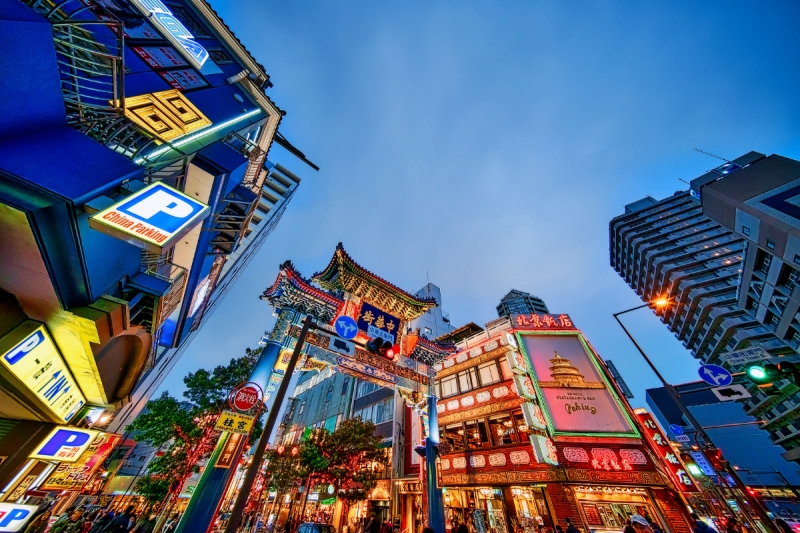
Image credit: tetra_angel via Canva Pro
Welcome to the largest Chinatown setting in Japan! Yokohama Chinatown is located in the city centre and was one of the first Japanese ports to open to foreign trade in 1859. Four colourful gates stand at the entrance to this colourful destination, each leading to a mecca of shops and stalls selling everything from cheesy souvenirs to Chinese herbs and medicine.
Of course, Yokohama Chinatown is most famous for its cuisine. You can try many delicious eats here including steamed buns, noodles, and a variety of Chinese dishes that have been altered with a certain Japanese flair.
Yokohama Chinatown
Address: Yamashitacho, Naka Ward, Yokohama, Kanagawa 231-0023, Japan
Access: Take K1 Yokohane Route, exit at Yokohama Kōen (Yokohama Park).
Recommended parking area: Direct Park Motomachi Chinatown, 274-1 Yamashitacho, Naka Ward, Yokohama, Kanagawa 231-0023, Japan
This should have sparked some of your imagination to explore Tokyo via a self-drive. Limited only by your own energy and enthusiasm, the sky’s the limit!





